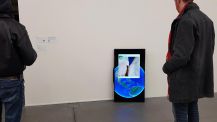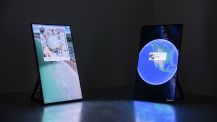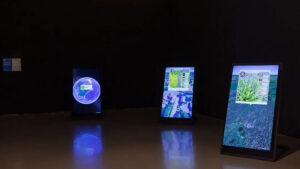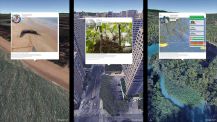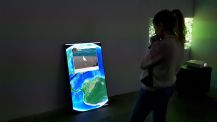Real-time cartography
This experiment shows photos of animals, fungi and plants that are uploaded right now by unknown users to iNaturalist.org via mobile phone. On Google Earth, these are mapped at the exact location where they were photographed. In addition, taxonomically similar species that occurred in the same country and became extinct within the last 30 years are automatically added in real time via RedList.org.
Used to Be My Home Too reflects in real-time our rich biodiversity and at the same time the continuous extinction of species and how we humans have become biodiverse agents interacting with the most fundamental processes of our Earth.
- on iNaturalist, the latest observation is retrieved
- on Google Earth this observation is located
- flying to the location where the observation is photographed
- from RedList.org, taxonomically similar species that occurred in the same country and became extinct within the last 30 years are automatically added in real time
- back to 1. (endless)
https://youtu.be/ajgyki2vaAg
https://youtu.be/dpKewpePzSA
Optionally, filters can be set to limit the vast number of observations. To do this, click on the gearwheel icon at the top left of the observation. Instructions: https://youtu.be/TX2TAr0qI4I
Examples
– Insect observations in New York
– Observations of plants and fungi in Amazonia
– Observations of domesticated animals
– Observations from a specific person
– Observations from densely populated urban sites
Sources
iNaturalist is a social network of naturalists, citizen scientists, and biologists built on the concept of mapping and sharing observations of biodiversity across the globe. Approximately 75’000 – 120’000 observations are uploaded and verified daily. iNaturalist may be accessed via its website or from its mobile applications. (All data can be accessed via API). https://www.inaturalist.org/observations
RedList.org, the International Union for Conservation of Nature and Natural Resources (IUCN) has evolved to become the world’s most comprehensive information source on the global extinction risk status of animal, fungi and plant species. (All data can be accessed via API). https://www.iucnredlist.org/search/stats
Google Earth is a computer program, that renders a 3D representation of Earth based primarily on satellite imagery. The program maps the Earth by superimposing satellite images, aerial photography, and GIS data onto a 3D globe, allowing users to see cities and landscapes from various angles.

